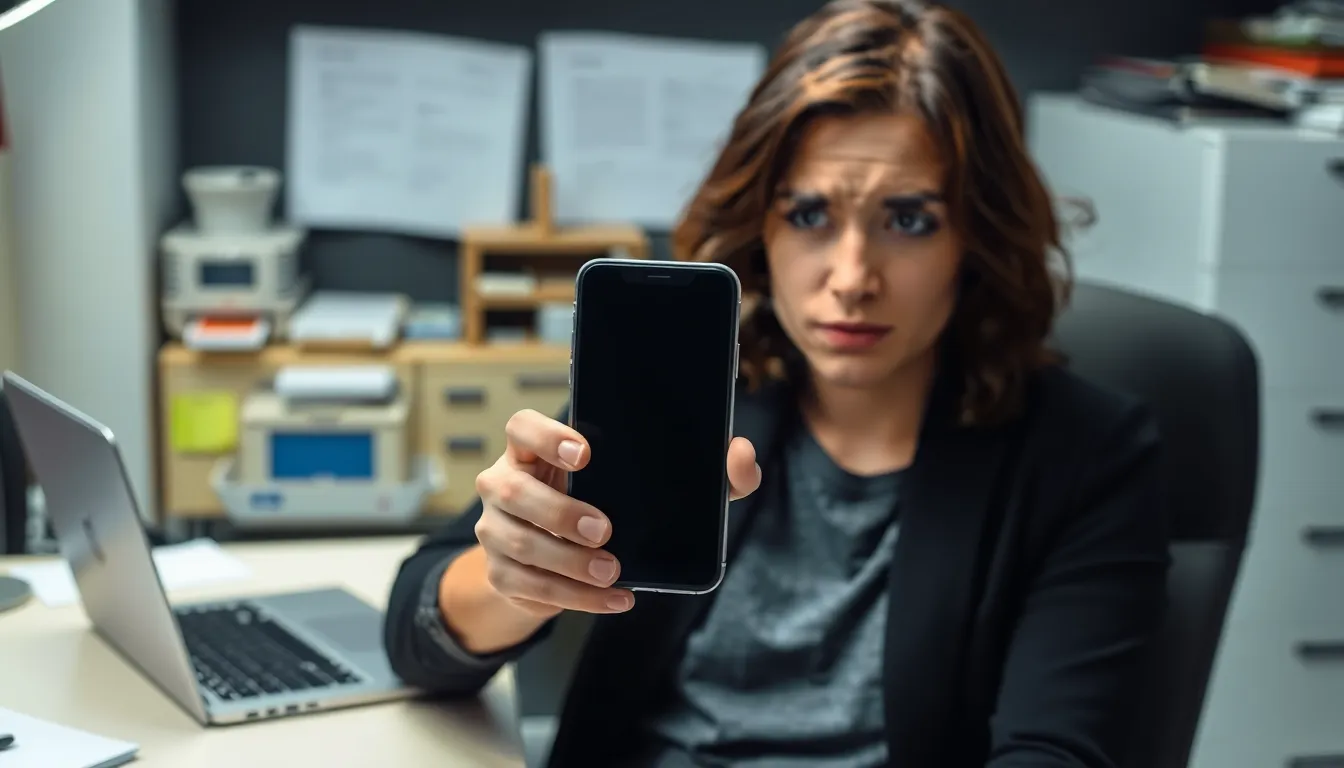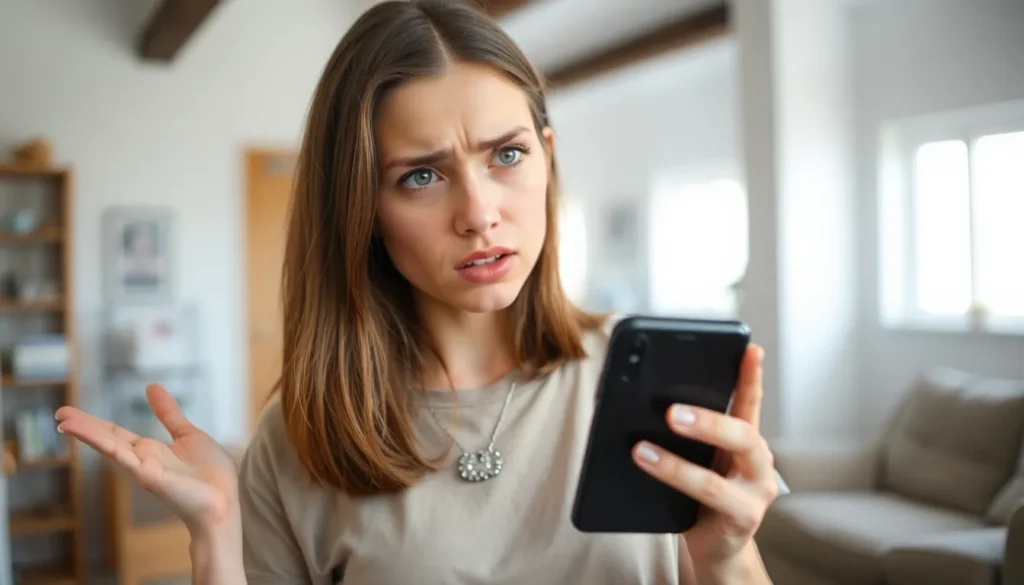Table of Contents
TogglePicture this: you’re all set to chat with your best friend, and just as you hit that call button, your iPhone screen goes black. Panic sets in. Is your phone playing hide and seek? Or is it just trying to keep your secrets safe?
Understanding the Issue
Experiencing a black screen during calls can cause frustration. Identifying the reasons for this issue clarifies its frequency among users.
Common Reasons for Black Screens
Black screens during calls often result from proximity sensor malfunctions. Proximity sensors detect when the device is near a face, turning off the display. Software glitches also play a role; updates can temporarily disrupt functionality. Another possibility includes accidental presses on the screen, which can occur when the phone is held up to the ear. Conditions like low battery may also impact performance. Each of these factors contributes to the screen turning black unexpectedly.
iPhone Models Affected
Various iPhone models experience black screen issues during calls. iPhone 6, iPhone 7, and iPhone 8 users report this problem frequently. Newer models, such as iPhone X and iPhone 11, occasionally exhibit similar behavior. Older models, like iPhone 5S, also show susceptibility to screen interruptions. Understanding these affected models helps users identify potential fixes or troubleshooting steps.
Troubleshooting Steps

Black screens during calls can frustrate users. Following a few troubleshooting steps can resolve the issue effectively.
Restarting Your iPhone
Restarting the device often solves temporary glitches. Press and hold the power button along with the volume button until the slider appears. Slide it to power off; wait a few moments before turning the device back on. After the restart, test the calling feature to see if the screen issue persists. This process refreshes system processes and can eliminate minor software bugs.
Updating iOS
Keeping the iOS updated is crucial for optimal performance. Navigate to Settings and select General. Tap Software Update to check for available updates. If an update is present, download and install it. Updated software can fix known bugs that affect functions like call handling. Regular updates enhance overall device performance and strengthen security.
Settings to Check
Understanding the settings can help resolve the black screen issue during calls on an iPhone. There’s a need to examine specific configurations to ensure proper functionality.
Proximity Sensor Settings
Proximity sensors detect when an iPhone is near the user’s face during calls. Check if the sensor is functioning correctly by making a call and covering the top part of the device. Ensure that nothing obstructs the sensors, such as cases or screen protectors. If the sensor is misaligned or dirty, clean the area gently with a soft cloth. Adjusting the case or protector may also improve sensor response. When the proximity sensor operates well, it prevents accidental screen presses and black screens during calls.
Display and Brightness Settings
Display settings can impact the screen’s behavior during phone calls. Navigate to Settings, then tap Display & Brightness. Ensure the Auto-Brightness feature is enabled for optimal screen performance. Adjusting the brightness manually can also help in different lighting conditions. If brightness settings are improperly configured, they may lead to unexpected black screens. Users should also confirm that the Night Shift mode is turned off during calls, as this feature alters color temperature and may affect visibility. By fine-tuning these settings, users may enhance their calling experience significantly.
When to Seek Help
If troubleshooting doesn’t resolve the black screen issue during calls, assistance may be necessary. Understanding when to seek professional help can save time and frustration.
Contacting Apple Support
Reach out to Apple Support for expert advice when problems persist. They provide guidance on diagnosing software issues and troubleshooting steps. Users can connect via the Apple Support app, website, or phone for immediate assistance. Be prepared to share device details like the model and software version. An Apple specialist can quickly identify underlying problems that may not be easily resolved independently.
Visiting an Authorized Service Provider
Consider visiting an authorized service provider if issues continue after contacting support. Authorized technicians possess specific training on iPhones and can conduct thorough diagnostics. Bringing the device for an in-person evaluation often leads to more effective solutions. In some cases, hardware malfunctions like proximity sensor damage require specialized attention. Users should locate nearby authorized service centers through the Apple website for convenience.
Experiencing a black screen during calls on an iPhone can be frustrating and concerning. Understanding the potential causes is key to addressing the issue effectively. Whether it’s a malfunctioning proximity sensor or a simple software glitch, users have various troubleshooting options available. Keeping the iOS updated and adjusting specific settings can make a significant difference in call experience. If problems persist despite these efforts, seeking professional assistance is advisable. Apple’s support team and authorized service providers can offer the expertise needed to resolve any underlying issues. By taking these steps, users can ensure smoother communication and a better overall experience with their iPhone.




